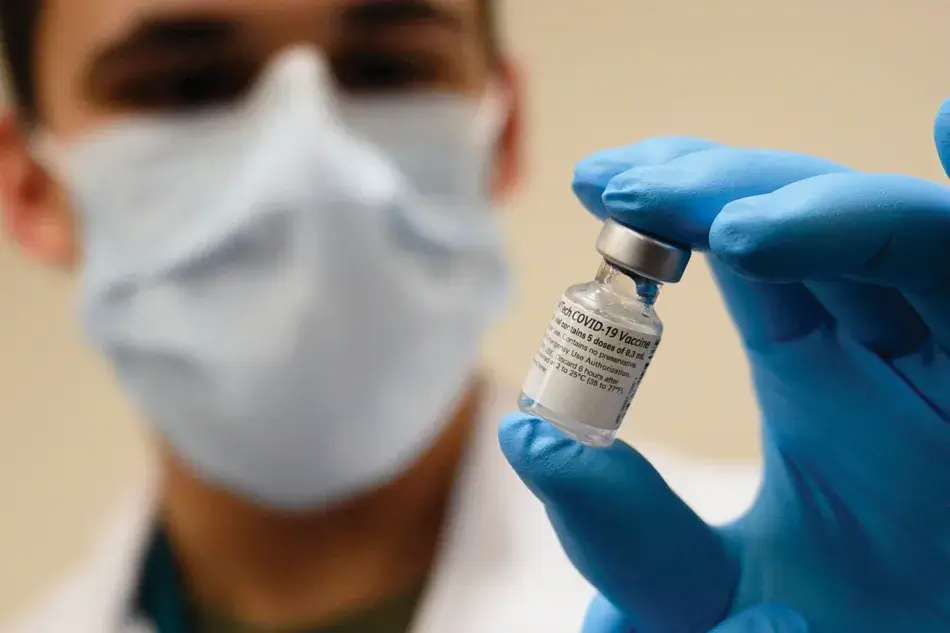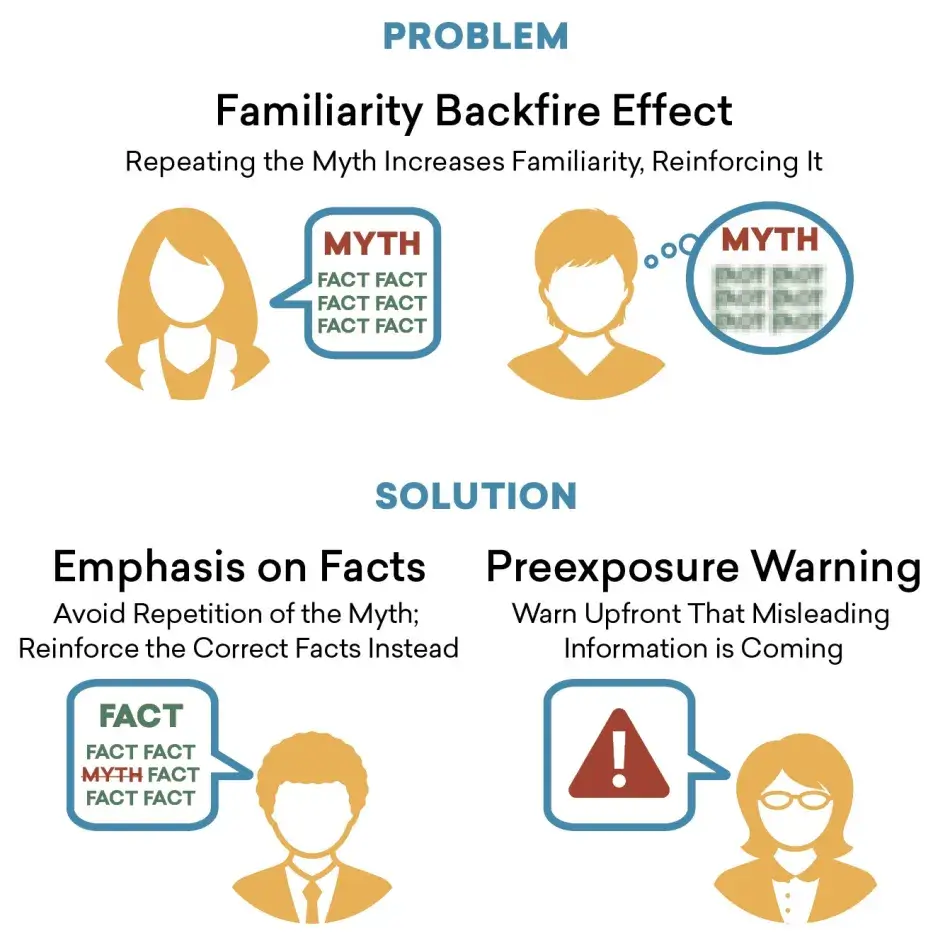
In August 2020, the Public Face of Science initiative published its final report, The Public Face of Science in America: Priorities for the Future, which outlines recommendations for strengthening the relationship between science and society. The first two reports released by the project, Perceptions of Science in America (2018) and Encountering Science in America (2019), show the heterogeneity of current attitudes toward science and the great breadth of experiences that can influence those attitudes. The final report takes a multifaceted approach and identifies three high-level areas for change that can, over the long term, shape attitudes toward science and people’s experiences with it.
Priorities for Shaping the Public Face of Science
Priority 1: Building Capacity for Effective Science Communication and Engagement in the Scientific Community
Priority 2: Shaping the Narrative around Science
Priority 3: Developing Systemic Support for Science Engagement Efforts
Though the research and recommendations from the initiative were completed before the start of the COVID-19 pandemic, the findings are more important than ever. As Academy President David Oxtoby and project chair Richard Meserve observed at the time of the release of the final report, “COVID-19 reinforces the need for continuing thoughtful work to address public access to reliable scientific content and to enhance the public’s capacity to identify and reject misinformation and disinformation (intentionally false information).”1 The pandemic has also highlighted the crucial role of the behavioral and social sciences to ensure clear communication of public health information. Disciplines like the cognitive sciences can provide insight into effective visual and verbal communication by studying how information is processed or spread within society. For example, research indicates that repeating a myth reinforces the falsehood, so a speaker should focus on repeating the correct facts or provide a warning that misinformation is being shared.2

Source: Adapted from Stephan Lewandowsky et al., “Misinformation and Its Correction: Continued Influence and Successful Debiasing,” Psychological Science in the Public Interest 13 (3) (2012).
Given the timely nature of the insights from the Public Face of Science initiative, the American Academy and the National Academies of Sciences, Engineering, and Medicine (NASEM) cohosted in September 2020 a webinar on “Earning Trust in the Age of the Pandemic.” The webinar featured opening remarks from David Oxtoby and Victor Dzau, president of the National Academy of Medicine, a presentation from Francis S. Collins, director of the National Institutes of Health (NIH), and a panel discussion with Evelynn Hammonds (Harvard University), Seth Mnookin (Massachusetts Institute of Technology), and Monica Schoch-Spana (Johns Hopkins University).
The speakers discussed the nuances associated with the public’s perception of a COVID-19 vaccine and the importance of building and maintaining trust during the vaccine’s dissemination. In framing the societal context for engagement on a COVID-19 vaccine, Dr. Hammonds reminded the audience that pandemics do not produce inequalities; they reveal inequalities. She also outlined the deep, long, and persistent roots of mistrust within African American communities. The Pew Research Center published data in December 2020 that show that while six in ten Americans say they definitely or probably would get a vaccine for COVID-19 if one were available today, only 42 percent of Black Americans said they would.3 It should be noted that the data were collected prior to the Food and Drug Administration’s Emergency Use Authorization for two vaccines following the completion of phase 3 clinical trials.
Given this historical context, the speakers addressed the importance of working with community leaders when addressing mistrust. Dr. Collins mentioned the NIH’s launch of Community Engagement Alliance (CEAL) against COVID-19 disparities. Dr. Schoch-Spana spoke about the need for local, community-based research that is transparent and that creates collective ownership over the outcomes, which is based on insights from The Public’s Role in COVID-19 Vaccination: Planning Recommendations Informed by Design Thinking and the Social, Behavioral, and Communication Sciences, a report published by the Johns Hopkins Center for Health Security. In the months since the webinar, Dr. Schoch-Spana has become one of the principal investigators for CommuniVax, a national alliance of social scientists and public health experts working with local teams that have long-standing community relationships
Seth Mnookin added further context to the communications landscape in his discussion of the distinction between COVID-19 vaccine skepticism and the anti-vaxxer movement. He described the role of elected leaders in eroding trust in institutions and the scientific process behind vaccine development. Political divides are also apparent in polling data, with 50 percent of Republicans saying that they would get vaccinated compared to 69 percent of Democrats. Throughout the discussion, the speakers reiterated the importance of listening and they reinforced Dr. Collins’s warning in his opening remarks that we must not “ridicule people or put them down,” because it will only “further polarize the situation.”
The lack of a one-size-fits-all engagement strategy for earning trust in a COVID-19 vaccine mirrors the nuanced attitudes toward science discussed in the Public Face of Science’s report on Perceptions of Science in America as well as the need to engage people where they are and in a manner that is informed by insights from the social sciences.

* Asian adults were interviewed in English only. Note: Respondents who gave other responses or did not give an answer are not shown. White, Black, and Asian adults include those who report being only one race and are not Hispanic. Hispanics are of any race. Family income tiers are based on adjusted 2019 earnings. Source: Survey conducted November 18–29, 2020. “Intent to Get a COVID-19 Vaccine Rises to 60% as Confidence in Research and Development Process Increases,” Pew Research Center.
For more information and resources on promising practices for COVID-19 vaccine communication and engagement, see:
REPORTS
COVID-19 Vaccination Communication: Applying Behavioral and Social Science to Address Vaccine Hesitancy and Foster Vaccine Confidence (National Institutes of Health)
A Practitioner’s Guide to the Principles of COVID-19 Vaccine Communications (Center for Public Interest Communications at the University of Florida College of Journalism and Communications)
The Public’s Role in COVID-19 Vaccination: Planning Recommendations Informed by Design Thinking and the Social, Behavioral, and Communication Sciences (Johns Hopkins Center for Health Security)
VACCINE DISTRIBUTION
Framework for Equitable Allocation of COVID-19 Vaccine (NASEM)
Effective Ways to Increase Vaccination Rates: What the Evidence Tells Us (Wellcome Trust)
DATA SOURCES
COVID-19 Vaccine Monitor (Kaiser Family Foundation)
Intent to Get a COVID-19 Vaccine Rises to 60% as Confidence in Research and Development Process Increases (Pew Research Center)
For more on the Public Face of Science Initiative, please visit www.amacad.org/project/public-face-science.